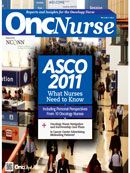Cervical Cancer Screening Guidelines Updated: Changes Mean Less Intrusive Prevention Strategies, Lower Morbidity
L. Stewart Massad, MD, discusses recent updates to guidelines for cervical cancer screening intended to implement prevention strategies that are less intrusive and reduce morbidity.
The release of two sets of guidelines in the past year has changed US clinicians’ approach to cervical cancer prevention by lengthening screening intervals, defining starting and stopping points for screening, and integrating human papillomavirus (HPV) testing into screening and management. The first guidelines covered how clinicians screen for cervical cancer. These were jointly released in March 2012 by the American Cancer Society (ACS), the American Society for Colposcopy and Cervical Pathology (ASCCP), and the American Society for Clinical Pathology. ASCCP will follow up in April with guidelines on management of screening.
Pap testing has been the foundation of cervical cancer prevention in the United States since Dr George Papanicolaou developed the technique in the 1940s. Once a leading cause of cancer death in US women, cervical cancer is now uncommon, with the ACS projecting only 12,340 cases and 4030 deaths in 2013. This decline is attributable to Pap testing to identify precursor lesions that can be treated prior to the development of cancer. Traditionally, clinicians recommended annual Pap testing and treatment of any grade of cervical intraepithelial neoplasia. However, the discovery of HPV by German virologist Dr Harald zur Hausen in the 1980s has allowed a better understanding of the nature of Pap test abnormalities, the transient nature of most HPV infections that underlie them, and the long lag period between HPV infection and cancer for most women who develop cervical cancer.
The peak age of onset of cervical cancer is around age 50. Cervical cancer is rare in women in their teens and early 20s, and most instances take years to develop after HPV infection. Some 80% of sexually active adults are infected with HPV, but more than 90% of infected individuals will clear their infections and are at low risk for cervical cancer.
Annual Pap tests commonly diagnose these transient HPV infections, including grade 1 CIN, with negligible cancer prevention benefit. Treating these lesions can increase the risk for preterm delivery in subsequent pregnancies. These findings prompted reexamination of past standards for cervical cancer screening and the management of abnormal screening results.
Once a leading cause of cancer death in US women, cervical cancer is now uncommon. This decline is attributable to Pap testing used to identify precursor lesions, such as the one pictured, that can be treated before cancer develops. Traditionally, clinicians recommended annual Pap testing and treatment of any grade of cervical intraepithelial neoplasia. However, the discovery of the human papillomavirus (HPV) has allowed a better understanding of the nature of Pap test abnormalities, the transient nature of most HPV infections that underlie them, and the long lag period between HPV infection and cancer for most women who develop cervical cancer.
New guidelines were developed by consensus in meetings held on the campus of the National Institutes of Health in Bethesda, Maryland, that included representatives from professional associations, patient advocacy groups and federal agencies, and other stakeholders. All guidelines were based on evidence review. Revision of the screening guidelines was facilitated by randomized trials of Pap and HPV testing in screening. Management guidelines were revised using estimates of the risk of high-grade CIN and cervical cancer from records of nearly 1.4 million women cared for in the Kaiser Permanente Northern California group.
The new screening guidelines recommend delaying Pap testing until age 21, given the low cancer risk among teens and the potential for serious reproductive morbidity from treatment. The guidelines replace annual Pap testing with Pap testing once every 3 years. For women ages 30 to 64, Pap and HPV cotesting is preferred since it has a greater sensitivity for subsequent disease and allows 5-year screening intervals. Screening should cease after hysterectomy for benign disease and at age 65 for women with recent negative screening histories.
The new management guidelines are more complex. Less aggressive evaluation and treatment is recommended for women ages 21 to 24 because their cancer risk is intermediate between that of younger and older women. Women with carcinogenic HPV infections but no Pap abnormality are managed with repeat cotesting in a year, and only those with persistent HPV infection or an abnormal Pap result go on to colposcopy to assess for cervical precancer. Genotyping for the highest risk HPV types (16 and 18) allows earlier triage to colposcopy when Pap tests are negative.
Women with abnormal Pap results but negative HPV tests can be observed if the Pap abnormalities are borderline, but risk remains high for those with high-grade Pap abnormalities, and colposcopy is still indicated. Follow-up after colposcopy and treatment using cotesting combines greater sensitivity for detecting new lesions with longer follow-up intervals.
These guidelines should result in cervical cancer prevention strategies that are less intrusive and more cost-effective, yet also carry lower morbidity. The new screening guidelines allow primary HPV testing as a cervical cancer screen in restricted settings, and future screening strategies may incorporate HPV testing; however, considerable education of patients and providers is needed before US clinicians adopt widespread primary HPV screening.
For more information about the screening guidelines, visit http://bit.ly/cdccervical.


